The last 10 years of my corporate experience has been as the Head of Sales operations for multinational corporations. During these years, the sales funnel has been the single most important tool that I have used to help grow our business.
As a small business, its extremely important for you to have an excellent sales funnel process set up in your business. Even if you don’t do many other things, a sales funnel alone will be able to help you grow your business. Understanding your sales funnel is crucial for your business to improve sales conversions.
At its core, a sales funnel is a customer journey through various touch points in the sales journey. It captures the many decision points for a customer.
Sales funnels for beginners
For those of you unfamiliar with the terms sales and marketing funnel, lets go through what this covers.
Typically, sales and marketing funnels are used interchangeably in different scenarios. These are dependent on how much of effort is put in marketing to acquire customers versus how much effort is put into acquiring customers via sales.
For you as a new business, the concept of a sales funnel can be very easily explained with an example. Consider that you want to buy a notebook computer for your business. The default choice for many business owners will be a macbook (i am typing on one myself).

You may not already know it, but you as a potential customer for apple are already in the marketing funnel for apple. Its almost impossible for anyone not to know about apple and their products, the differentiating factors and the design elements.
For most folks, the marketing funnel for apple started when Steve Jobs launched the first iPhone. It brought all the desirable characteristics of apple that we know today and made everyone associate them with the apple brand.
This knowing what apple is and what it stands for is what most marketing folks refer to as “Awareness”.
At this instance, all of us who are exposed to the brand came into the top of the funnel for apple. Now over the years, apple has improved all their products, built an ecosystem around the iPhone, macbook, airpods and many accessories along with the mac OS and software.
What this does, is that when anyone wants to buy a phone, computer or music gear, apple comes to mind with a set of products as possible options. Apple has so many touch points today across all forms of media, they make sure that they get into your head.
This getting into the head of the customer is what many marketers and sales folks call as “consideration”.
Now, coming back to the situation where you want to buy a notebook for your business, you have apple as a choice. You will naturally also have other choices from other makers too and you will evaluate all of them on parameters of cost, performance, reliability, battery life and others that matter to you.
Once you have the specs. that you want, you are ready to explore options to actually buy. This is what people call as “intent” or “interest” depending on the urgency with which you want to buy.
As you look at all the options, you make up your mind on a specific product that you want to buy, a situation that marketing folks call as “decision”.
Once you have decided on the what and when , you go ahead and just get yourself a notebook. This is the final “purchase”.
What i have walked you through here, is the journey in your head that you go through when you want to choose a product and buy it. This mental journey is often put on paper with a lot of numbers in them and each point being called as a stage. This on-paper flow of your mental journey is essentially what is known as the “Sales and marketing funnel”.
In the example we walked through above, its skewed towards marketing since the “sales” happen either in the store or online, which is initiated by you, the customer. In many instances, small businesses don’t have the resources to create the massive marketing to make customers aware.
Instead, they rely on their small teams, communication via WhatsApp etc. to reach out to prospective customers and convert them into sales. As far as small businesses go, its more skewed towards sales rather than marketing and the term “sales funnel” works well.
What are the stages in a sales funnel?
As the name indicates, every sales funnel has a set of stages which indicates the mental decision points the customer has to go through before they buy your product or service. In practice, its best to have the foundational sales funnel and add elements to it suit your business.
The foundational stages are
- Awareness
- Consideration
- Interest
- Intent
- Decision
Awareness This is where the prospective customer is made aware of your product or service. For large companies, this involves taking the route of brand building, driving brand campaigns and promotions in large public events such as the super bowl.
For you, as a small business, building awareness is most challenging aspect of the sales funnel since you cannot afford to spend bug dollars on sponsorship, branding or the like. The best way for prospective customers to become aware of your business is in the following ways
- Partner with other local businesses to cross-promote products, more than 2X the usual number of customers will see your products this way
- Organize local events in your community and make it extremely personalised, get the audience to drive word of mouth on your behalf, you will have tens of people speaking about you favourably
- List yourself in the google business listings to come up in localised search, your business should pop up when someone searches for some product in your neighbourhood
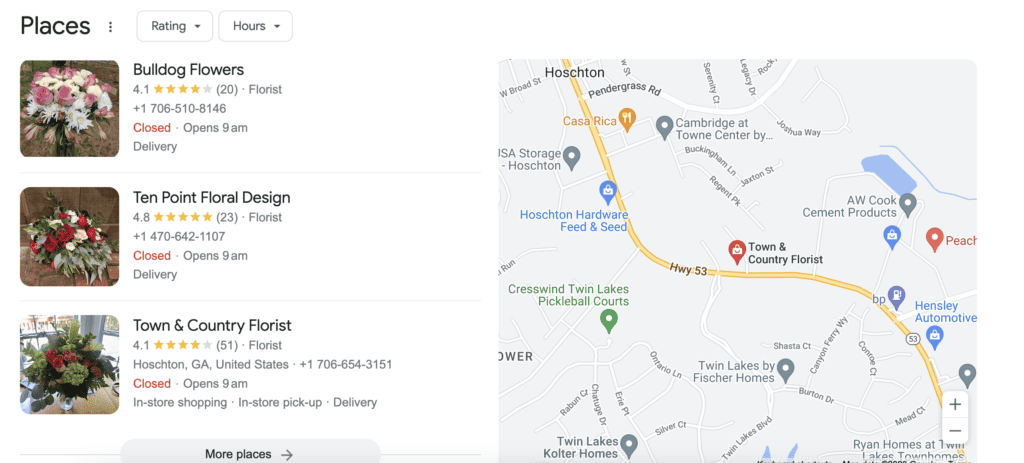
Once you do these steps, as a small business, you would have done 75% of what is possible to drive awareness at your scale. The next 25% which includes digital promotion, ad campaigns can be picked up as your business grows and is able to generate cash that can be spent.
Consideration is the point at which, your product or service becomes a choice in front of your customer while they evaluate options. Awareness of your brand is a pre-requisite before a customer can reach a point of consideration.
As a small business, there are two key factors that you can use which will help improve consideration for your brand. the rest of the factors that influence consideration are more suited for larger companies.
- Closely matching customer preferences and needs, taking care local trends so that you give exactly what customers who are near you need
- An assurance of quality, this is a perception that you need to build with your customers that once they choose your product, they have a sense of guarantee that it will work
As you stay consistent with these, you will see over time, that the above two factors start having a rub-off effect on your brand. Your brand will start resonating with meeting customer requirements at a good quality.

Interest This is the stage of the journey where the customer is seriously interested in checking you out for your offering. There is a nuanced difference between interest and consideration and many times, marketeers will merge the two.
As a business owner, you will want your customers to have more of an interest than just a consideration in your business. If a customer is interested in you, you are on their priority list.
To get the interested, you will need to do the efforts listed in the awareness and consideration stage. Once a customer is interested, your activities will tend to drive them to actually have an intent to buy the product. You don’t have to generate more interest in an already interested customer. You have to get them to have intent.
Some of the best practices that small businesses can adopt to drive intent are
- Put your best foot forward, make the customer welcomed in your place, while giving them the freedom to explore.
- Give subtle hints that you are always ready to help while not being intrusive. Japanese business owners are excellent at this, they will look at customer expressions and when a customer looks dissatisfied, thats when they know they need to step in to solve a problem.
- Give customers a sense of “control” and do not pressure them to close a sale. Customers don’t want to feel ripped-off or feel pressured into a sale.
- If you have a digital product, use the intent of customers to educate them about all the problems that your product solves for, build confidence slowly but steadily.
Your priority is to get the customers to have an intent from just an intent at this stage.
Intent is when the customer has come to buy. This is where, in an ideal world, all your customers live. They will need a gentle nudge to cross over and give you the money. Make it easy for them. There are some best practices which are easy for a small business to adopt
- Have a generous return or replace policy – something that cannot be abused easily, but generous and reasonable. Nordstrom’s secret to success was the no questions asked refund. Again, makse sure that it cannot be abused and genuine cases are taken care of.
- Offer spot discounts or seasonal offers – when someone is just a small nudge away to commit to a purchase, offering a sweetner will always do the trick to get them over
- Have a great post sales support system – customers need a sense of safety when they buy something, if they know that you are around to help even after the sale, they will be more likely to convert quickly.
Purchase is the last stage in the sales funnel where a customer commits to the deal and actually hands over money to you. What customers typically expect here is that the value you provide far exceeds the costs they incur while dealing with your business.
How does a sales funnel help a business?
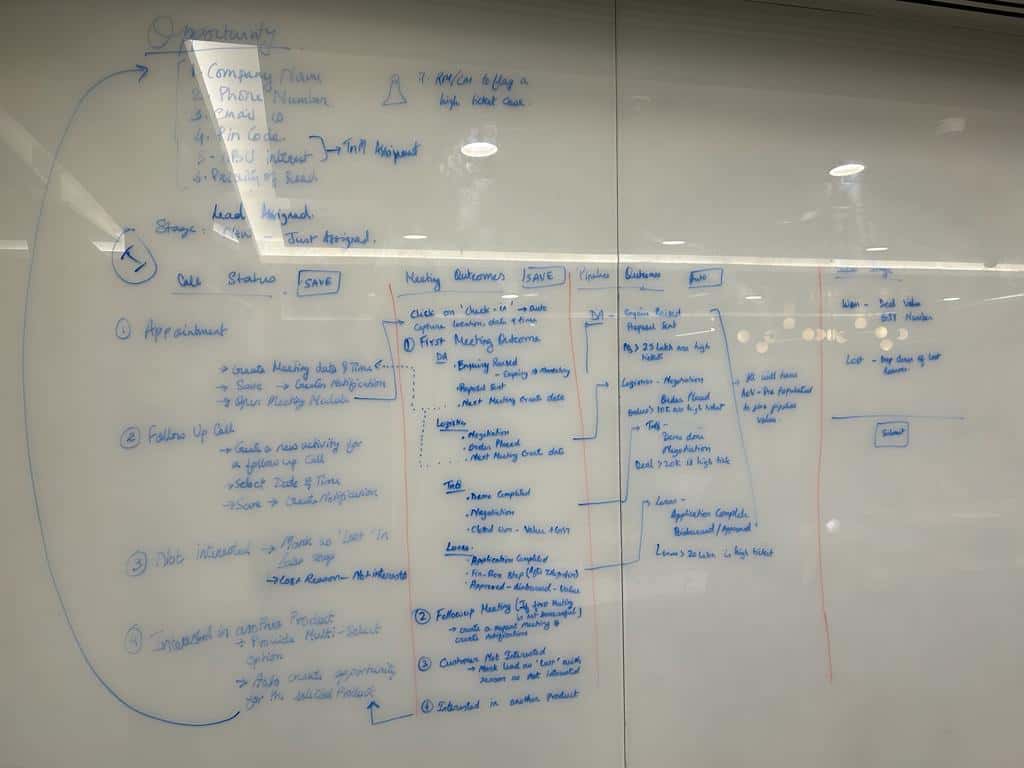
Now that you have understood what is a sales funnel, lets look at why most successful businesses put in so much effort to build and track sales and marketing funnels. There are specific benefits which are applicable for large companies and many of them use tools to automate most sections of the sales and marketing funnel.
Customer acquisition is done through a structured journey
It creates a clear structure for the customer’s journey from awareness till the end purchase, mapping out the touch points a customer has from first becoming aware of a product or service to making a purchase and beyond.
Putting all these touch points on paper will enable executives in companies to figure out the best stages in the journey where they can make interventions. The data points in the sales funnel will also enable businesses to invest resources with best possible return on investment.
Funnel management and Sales process becomes predictable
A well-defined and implemented sales funnel brings predictability to the entire sales process, helping businesses forecast sales and revenue more realistically.
The funnel also helps in categorising leads based on their likelihood of converting, allowing for more efficient funnel management and prioritisation.
Using this data, the company can get sales teams to prioritise on customers who are most likely to convert and the redirect other customers back through the marketing campaigns to get them more warmed up.
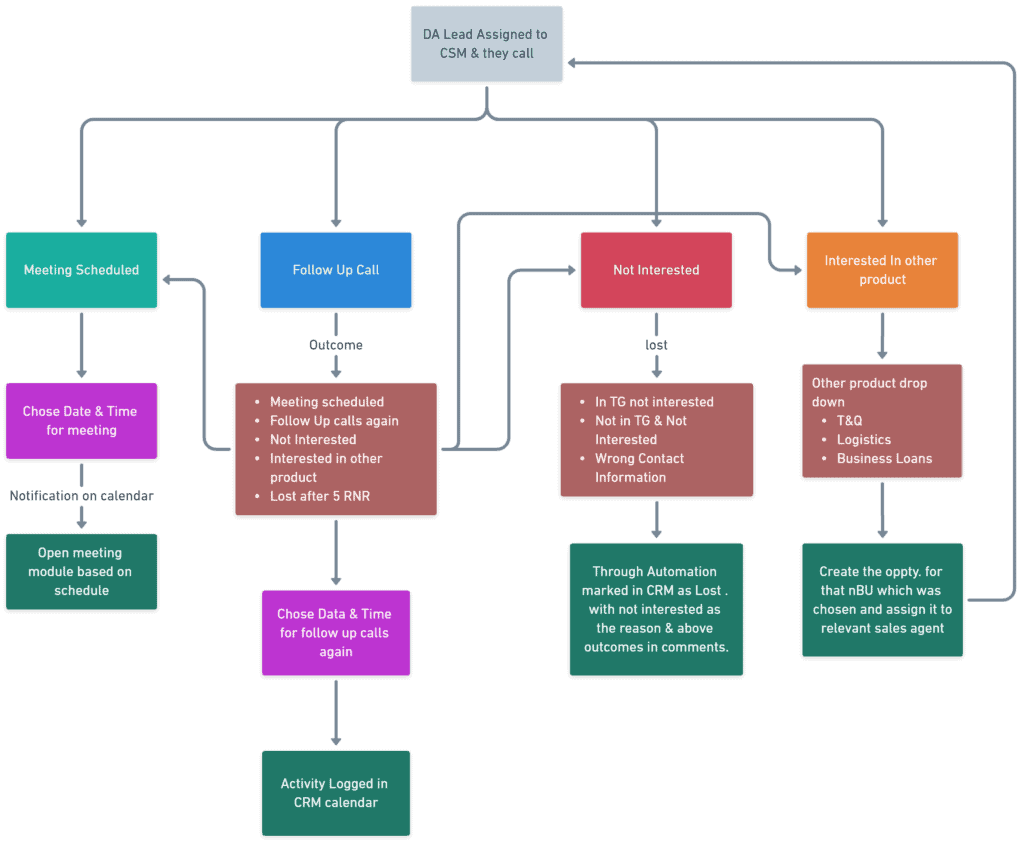
Driving better funnel marketing efficiency using social media
A sales funnel allows for more targeted marketing efforts in various social media channels. Larger companies usually have a social media promotional budget which they can use according to the various stages in the sales funnel.
By understanding where a customer is in the funnel, businesses can tailor their messaging and marketing tactics to be more effective. If a customer visits a page for information, the customer can be learning more about the product so communication campaigns can look at educational content.
However, if the customer visits a transaction page and customer views various offers available, then they can be sent custom offers or spot discounts to close the sale.
Marketing automation funnel to trigger automated campaigns
A lot of automation tools available in the market today can be linked to your sales funnel for automated marketing campaigns.
For example, if a customer walks in to your store and you capture the customer’s phone number or email ID, a simple marketing automation practice is to send automated emails thanking the customer or by providing additional information on products depending on the level of interest that the customer displays.
Marketing automation of the funnel provides valuable analytics, offering insights into customer preferences, past journeys and the effectiveness of previous communication strategies. This data-driven approach ensures continuous refinement of marketing efforts that end up enhancing customer experience.
How do sales funnels help a small business grow quickly?
A well designed sales funnel can be the silver bullet for sales growth that many businesses pursue. As a small business, it should be of topmost priority for you to look at your product offering, your ideal customer profile and the create a sales funnel that makes sense for your business.
A sales funnel should have all the key metrics that are relevant for your business. It should reflect the real-world sales process so that you can track what really happens on the ground.
There are a few specific elements in a sales funnel that help small business increase their sales quickly. Some of these can be implemented easily and at low cost and tend to give a disproportionate increase in sales.
These are
- Putting in place a landing page to direct all your campaign traffic
- Building a sales funnel process that reflects the real sales process
However, to get a comprehensive understanding of how a small business can increase sales, please read 3 of my full articles that teach small businesses on how to increase sales and grow faster.
- Effective strategies to increase sales for small businesses
- How can small businesses attract more customers
- Key factors that drive the growth of small businesses
These articles will give you a small business owner a complete guide to increase sales.
Build landing pages in marketing campaigns to capture leads
Langing pages are web pages that are created by businesses to direct customers onto them. Landing pages are usually the end point of any advertisement, poster, infographic or any other promotional piece of content that is run on social media platforms or on google.
A landing page usually has a lead form where the customer can enter his or her information along with ways in which he or she can be contacted.
The below example is a landing page of Quickbooks online. My past employer Intuit, used to run campaigns on various social media platforms with call to action buttons that redirected traffic on the the landing that you see below.
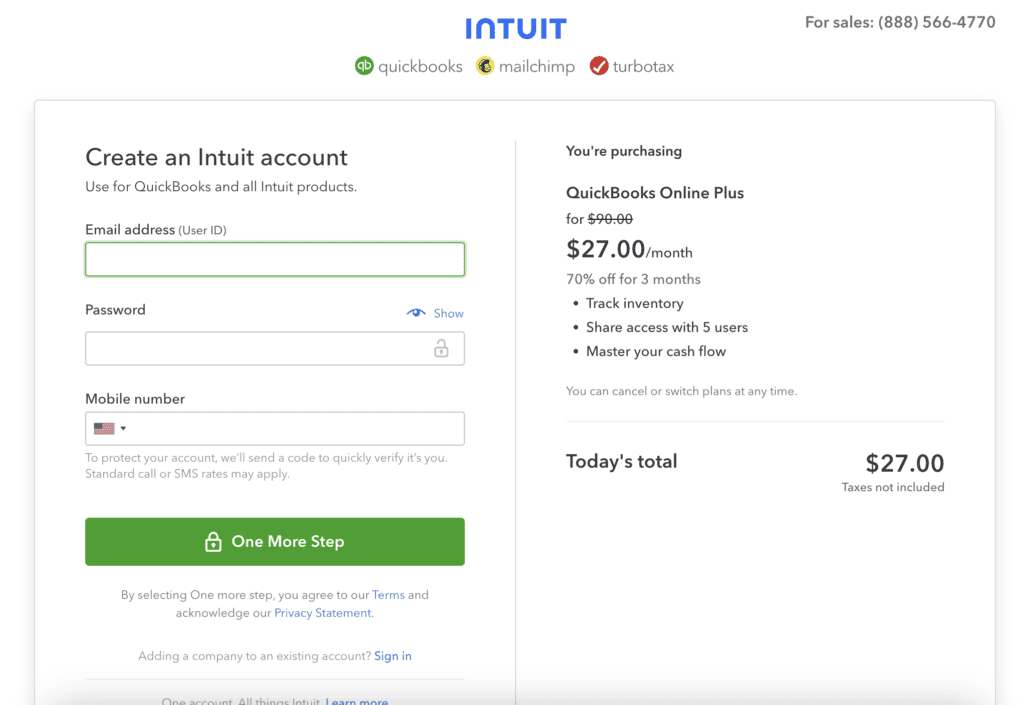
Using a simple landing page like the one above helps small businesses funnel a lot of traffic to them and get leads for their product.
Once the small business gets leads from a landing page, they are routed to a sales team where the agents can either call the customer for a sales call or to take an appointment for a physical meeting.
A well designed landing page is the most powerful online page that a small business can put up to help quickly drive traffic and get a huge volume of leads.
Build a robust funnel process that reflects the sales process
While designing a sales funnel, its of importance to design the stages following the fundamental stages explained above. While doing this, you will have nuances that are specific to your business and your sales funnel should reflect this.
For example, in the business i had to manage, the customer leads were generated through a digital campaign from a landing page. These leads were then routed to sales agents who made phone calls for their sales pitch.
The sales process we had laid out was an educative process where the sales agent would talk about the benefits of the product, schedule time for a live demonstration of the product so that customers could experience the value. Post a demo, the customer would usually negotiate on price since it was a custom offer and then the deal used to close.
The typical sales funnel would like the image below for a given period of time.
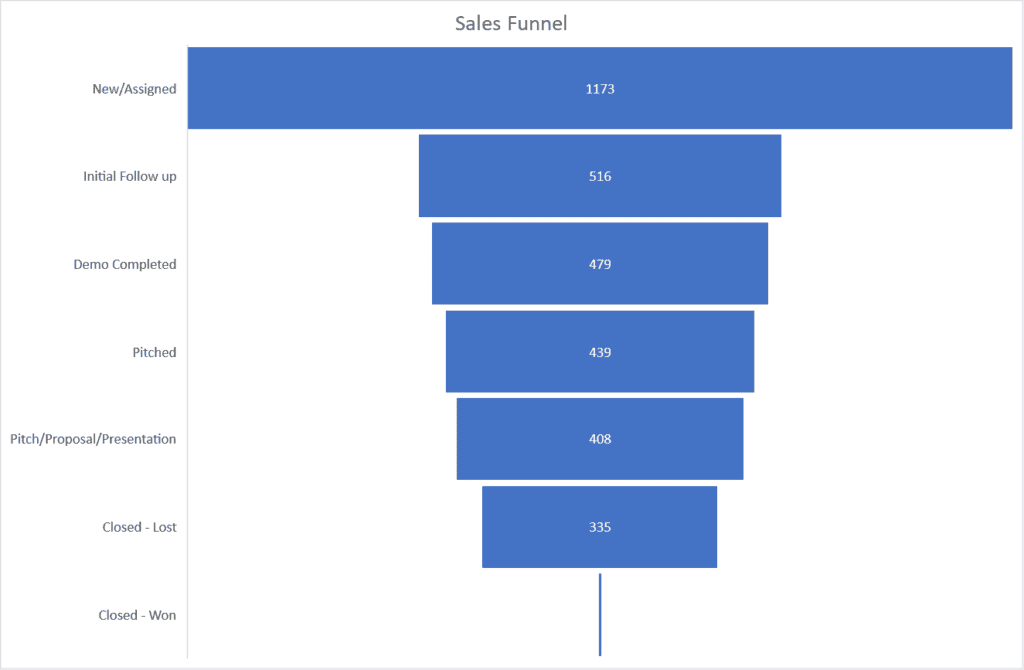
Here, you can see the number of leads that have passed down various stages of the sales funnel. In order to grow the business quickly, the company decided to double down on the customers who had witnessed a product demo since they were adequately warmed up.
These customers were specifically invited to an online event and a spot offer was disclosed at the end of the online event. This enabled a closure of many leads into paying customers at the end which gave a boost to overall sales numbers for the month.
In this manner, using a sales funnel that reflects your sales process is crucial if you want to grow your business quickly.
How does the sales funnel diagram look like?
A typical sales funnel has 3 sections, top of funnel, middle of funnel and bottom of funnel. As covered earlier, Top of funnel is where you as a business should drive more customers as propects by focusing on awareness and education to build consideration.
Example of a sales funnel for a small business
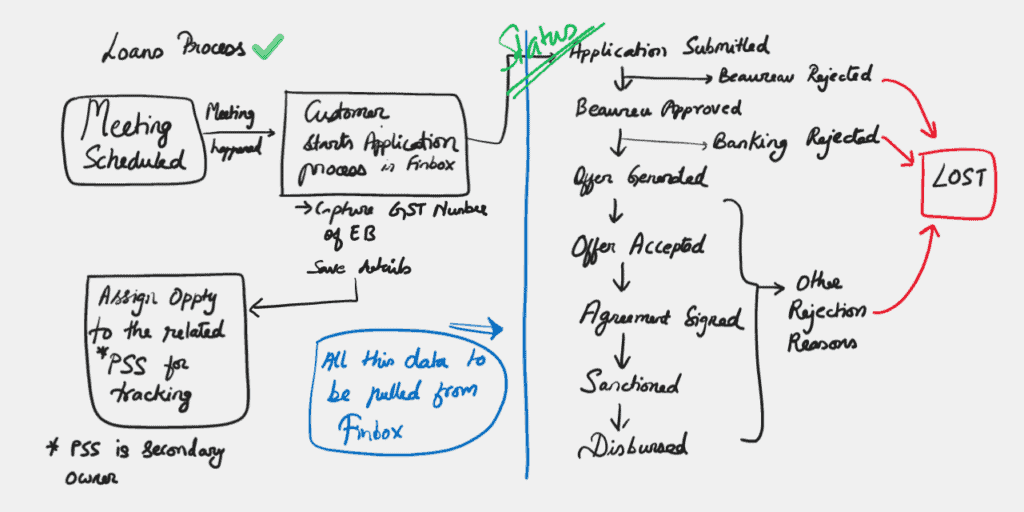
Lets take a look at an example of a sales funnel of a small business. For this I will refer to a small business that my friend runs. Its a home interior and modular kitchen company. My friend uses google local business listings to get him organic traffic on google maps.
He then has a chat thats open within the google business listing to collect and share information with prospective customers who reach out to him. In his sales funnel, he calls customers who reach out to him as “Prospects”. Each prospect is tagged to 3 different intent levels which he uses to determine the next way of interacting with them.
My friend’s Prospect has three levels
- Just Exploring out of curiosity
- I am considering a home remodel soon
- I am in the middle of a home remodel and i need something today
Based on which classifier he uses for each of the customers that call, he has a different approach to deal with them.
For example, for a customer who is just exploring out of curiosity, he engages the customer with educational content about various types of channels, what to look for in a good quality fitting, the best practices for installing a dishwasher and so on.
Similarly, for a customer who is planning a home remodel in the near future, he goes about explaining the brands and options available to the customer along with educating them about his installation and building services that come with a warranty
However, for a customer who is in the middle of a home remodel, there is an immediate need, he tries to lock in a sales with a great offer that the customer cannot refuse.
Through this approach, he employs different techniques and strategies for different customers who are in various stages of the sales funnel.
As this is an example for a home-building or home remodelling business, you will have to think about what suits your business well.
How to build your first sales funnel?
As a small business, building your first sales funnel can be daunting. But with the right through process, it can be made simple and effective. The following steps are to be followed by anyone who wants to build a sales funnel for their business
- As the business owner, look at the customer experience you want to deliver
- List out the feelings you want the customer to experience while dealing with you
- Link those feelings with a thought process that your customers might have
- From the thought process arrive at key decision points your customer will face
- Each of those decision points will become a part of your sales funnel
This is a customer-back way of coming up with a sales funnel, there is a lot of deliberations you need to do and a significant time to be invested along with your customers to know what is in their mind.
In an ideal scenario, you will build your sales process along with your product development process where you test and iterate if your product actually solves a customer’s problems.
Once you have the stages in your sales funnel that reflect the decision points that customers will go through, you will have to put it into practice.
The best way to start it is by offering customers a lead magnet.
Offer a lead magnet to start building a prospect customer list
A lead magnet is a no-cost product or a service that you can offer your customers for free. In exchange, you ask your customers to give you their contact information and some more details like their interests and preferences. The lead magnet will not cost you anything to produce.
A lead magnet can be a free digital resource, a free limited time trial program or a discount coupon that can be offered to a prospecting user.
This will help you build a large top of funnel, to whom you can send customised and personalised communication. This communication becomes crucial to build awareness and consideration over time. Just make sure that you don’t spam your customers.
With this process, once you start building a top of funnel with a lead magnet, you will see many leads moving down your sales funnel over time and you interact more with them and build a relationship.
This structured approach to nurturing your prospect list will enable you to grow your business over time and consistently.
Do sales funnels actually work?
To remind you, sales funnels can be highly effective for businesses, but their success completely depends on how well they are conceived, designed, implemented, and continuously refined. Keep in mind the following aspects while you go on your journey to build your sales funnel.
- Keep your customer in mind
- Identify the customer decision points
- Translate these decision points into your sales funnel stages matching with the fundamental flow
- Measure your funnel on these stages
- Take up interventions to move more leads down the funnel
If you implement these sincerely in your business, you are bound to see business growth, an increase in sales and overall great customer satisfaction in your business.
